The summer months of Australia differ drastically from the rest of the globe due to its location in the southern hemisphere, which renders it one of the sunniest regions on the planet. Before visiting this magnificent nation, selecting the best time and place for such a journey is essential.
Continue reading to learn about the summer months in Australia and to see some of the most gorgeous locations on the continent.
What Months Are Summer in Australia?
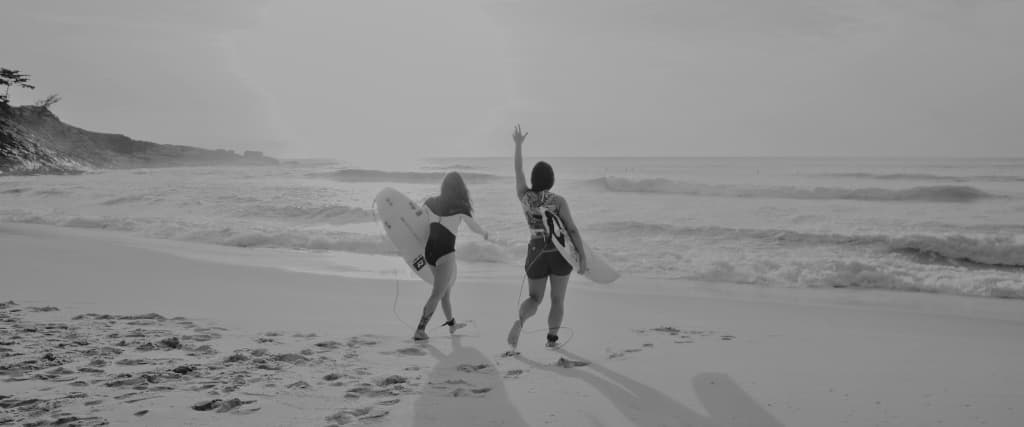
Australia is in the Southern Hemisphere and has a big nation area; hence the climate varies around the country. The desert covers 18% of Australian land and is characterised by a semi-arid environment.
Furthermore, Australia’s southeast and southwest corners have moderate climates, but the northern regions have tropical climates with desert areas and grassland.
Australian subtropical, equatorial, and tropical areas’ northern extremities often experience both wet and dry seasons. More specifically, Darwin, Arnhem Land, Katherine, Kakadu, Broome, the Kimberley, Cairns, the Whitsundays, and the Daintree Rainforest may all be divided into two seasons. The dry season lasts from May to October, and the wet season from November to April.
On the other hand, Western Australia, Queensland, New South Wales, Melbourne, and Southern Australia have four distinct seasons. Here is a glance at the seasons in Australia throughout the year:
- Spring – During September, October, and November, temperatures range from 17°C to 35°C.
- Summer – December, January, and February, with temperatures ranging from 20 to 37 degrees Celsius.
- Autumn –March, April, and May, with temperatures between 17 and 35 degrees Celsius.
- Winter – June, July, and August, with southern temperatures averaging 11°C and northern temperatures averaging 30°C.
In Australia, when does summer officially begin? In Australia, each season starts on the first day of its corresponding month and finishes on the last day.
For instance, the following are the Australian season dates for 2022:
- Autumn will last from March 1 until May 31, 2022.
- Winter will last from 1 June 2022 through 31 August 2022.
- Spring will last from 1 September 2022 to 30 November 2022.
- Summer will last from 1 December 2022 to 28 February 2023.
Depending on where you are in Australia and the time of year, you may expect to see a broad range of temperatures. So what are some of Australia’s largest cities’ average monthly temperatures?

Interesting weather facts about Australia
The hottest temperature recorded in Australia was 50.6°C on January 13, 2022, at Onslow, Western Australia. On the other hand, the lowest temperature ever recorded in Australia was 23.1 °C on June 29, 1994, at New South Wales, Charlotte Pass.
With a standard of ten hours of sunlight each day, Tennant Creek in northern Australia is also among the ten sunniest places on earth.
Here are some suggestions on how to cool down if you’re one of the thousands of Aussies who knows how awful it is to turn and toss in a heated bed at night.
When Is the Best Time to Visit Australia?
Australia is best visited in the spring and fall. September through November and March through May are ideal for travelling since they provide better weather, cheaper lodging and transportation, and fewer visitors than summertime, considered the most active and popular season to visit Australia.
Check out the ideal time to visit Australia if you have it on your travel itinerary below:
The Best Time to Visit Victoria

Some parts of Victoria have cold winters and hot, dry summers. Some areas stand out for having warm temperate temperatures, while others do so for having chilly temperate or alpine ones.
The best months to travel are March and April.
Various pursuits and attractions are as follows:
- Whale watching
- Victoria Bug Zoo
- Legislative Assembly of British Columbia
- Miniature World.
- Craigdarroch Castle
Let’s discuss some locations that should be noticed, as Melbourne is the centre of the cultural history that defines the lands of Victoria.
Melbourne is most beautiful between March and May and September and November.
Melbourne’s events and attractions include:
- Royal Botanic Garden
- Eureka Skydeck
- National Gallery Victoria
- Dandenong Ranges National Park.
The capital of South Australia, being the home of several cultural and artistic institutions, deserves special recognition.
February and March are the ideal months to visit Adelaide.
Adelaide’s best tourist spots and things to do:
- Central Market
- Adelaide Zoo
- The Adelaide Botanic Gardens
- The South Australian Museum.
The Best Time to Visit the Northern Territory
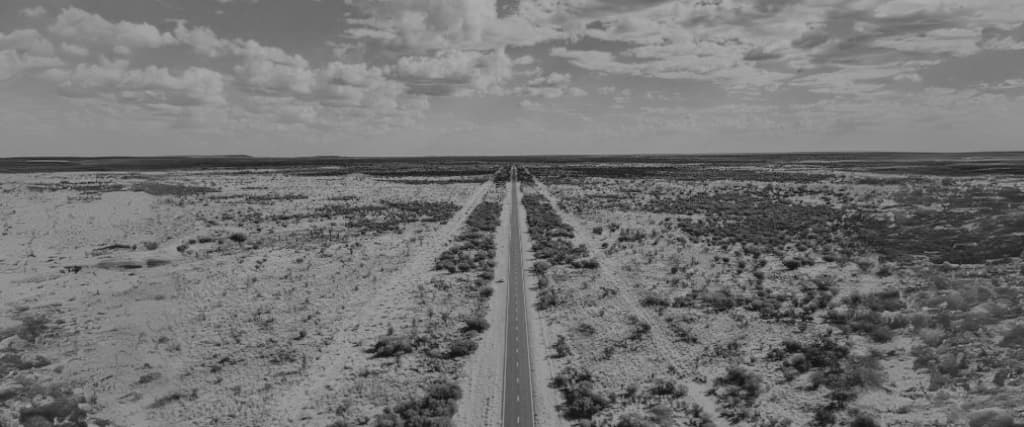
Australia’s most excellent deserts may be found in the Northern Territory. These include the Great Sandy Desert, the Tanami Desert, and the Simpson Desert.
A monsoonal climate that fosters extremes has sculpted most of the Northern Territory, making it home to some of the world’s most striking landscapes, from mighty rivers and vast wetlands to desolate deserts and sandstone escarpments.
1. The Red Centre
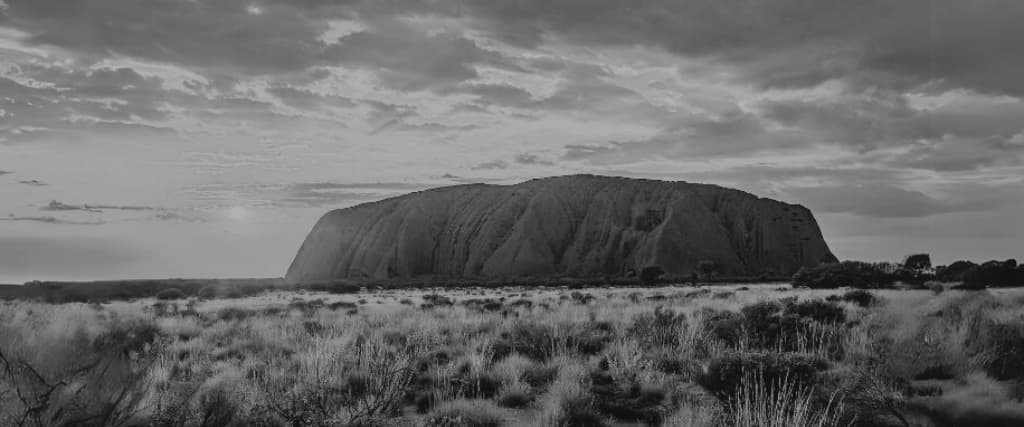
The heartland of Australia is a semiarid wasteland, with high summer temperatures and even frigid winter nights due to the lack of rainfall. The Red Centre, Uluru, and Kata Tjuta are best visited between May and September when daytime highs average between 20 and 30 degrees Celsius (68 and 86 degrees Fahrenheit).
Because of the lower temperatures and lack of precipitation, going for a stroll is more comfortable, safer, and secure. Packaging warm clothes is essential since winter nights may become rather chilly.
The park’s wildflowers are often at their peak in August and September. Daytime highs often reach 35°C (95°F) from October through March. Rainstorms and downpours accompany the scorching heat, filling the waterholes and setting off the waterfalls at Uluru.
In the hot summer months, visitors to the park should bring lots of water and avoid long walks after 11 a.m. Consider purchasing a head net once you get there to protect yourself from the swarms of insects that populate the desert throughout the summer.
Uluru’s climate has been described as “extreme.” In the summer, temperatures in the desert may reach 45 degrees Celsius (113 degrees Fahrenheit). In contrast, wintertime lows may dip below freezing (32 degrees Fahrenheit). Here is a breakdown of the weather you may anticipate during your trip, broken down by season and month.
- Temperatures in the spring often peak at about 26 °C (79 °F) and dip to around 17 °C (62 °F) (48 °F)
- Temperatures throughout the summer range from a high of 35°C to a low of 38°C (95°F to 100°F)
- Temperatures in the fall range from a high of 23 °C to a low of 28 °C (73 °F to 82 °F)
- Temperatures in the winter range from a high of 22°C to a low of 20°C (71°F to 68°F)
2. Darwin, Kakadu, Arnhem Land, Katherine and Surrounds

The Top End of Australia has more than its fair share of world-class sites and attractions, including tropical weather, Salt Water Crocodiles, rich Indigenous culture, an abundance of fishing places, National Parks, and a relaxed Australian way of life.
The area has one of Mother Nature’s worst climatic differences due to the monsoonal wet and dry seasons, which alternate on a half-yearly cycle from dry heat and burned ground to incredible downpours and flooded plains.
Wet Season (November – April): Extreme rainfall occurs at the Top End during the rainy season. Temperatures average between 25 and 33 degrees Celsius (77 and 91 degrees Fahrenheit), with humidity levels rising sharply (above 80 percent).
During the rainy season, visitors to the Top End have some intriguing choices. Kakadu and Litchfield National Parks and the surrounding area are bathed in a verdant green hue because of the increased precipitation.
The Jim Jim Falls and Twin Falls scenery is particularly stunning this time of year. – Katherine Gorge is a lovely place to visit in the wetter months. The area’s waterfalls are at their most spectacular, and the wildlife is most active after heavy rain, but roads may be blocked, and certain sections may be inaccessible.
Dry Season (May – October): Warm, bright days and cool cold evenings characterise the Top End throughout the dry season. The best time to visit is between March and May, when temperatures are between 21 and 32 degrees Celsius (70 and 90 degrees Fahrenheit), and the humidity is between 60 and 65 percent.
The Top End is most accessible between May and July when temperatures are at their lowest. Previously inaccessible areas due to floods or other hazards are now available to tourists, who are welcome to explore them at leisure.
The Best Time to Visit Western Australia

Southwest Australia has all four seasons, whereas the Northern region alternates between dry and rainy periods, while a semiarid climate characterises the rest of Western Australia.
November through March (summer) are the driest and warmest in the south of Western Australia, below the Tropic of Capricorn.
Temperatures are more comfortable above the Tropic of Capricorn from May to October during the dry season.
Best time to visit:
- Southern parts – from November to March
- Above the Southern Tropic – from May to October
Activities and attractions:
- Fremantle in Perth
- The Quokka’s at the Rottnest Island
- The Pinnacles Desert
- Stromatolites and Shell Beach
- Jet Boat Tours to the Horizontal Falls
- Swan River Cruises in Perth.
1. The Coral Coast
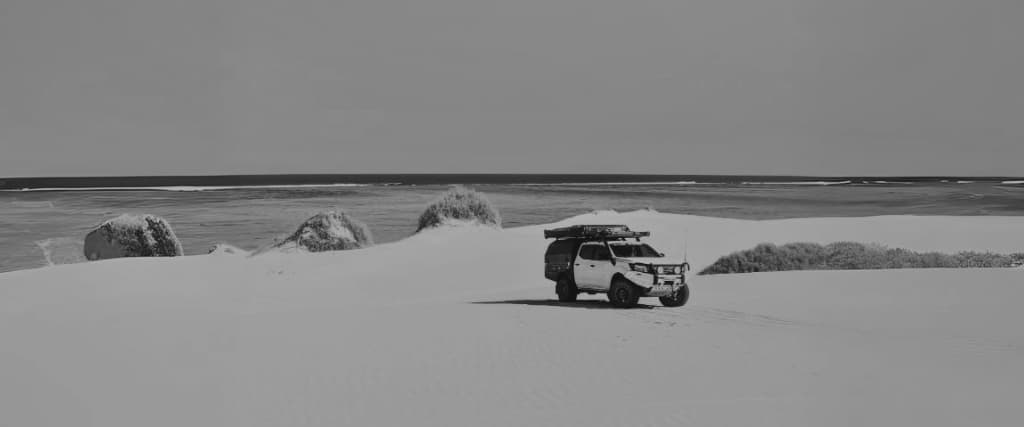
The Coral Coast is located north of Perth. It consists of more than 1,100 kilometres (680 miles) of pristine beaches, barren outback, laid-back coastal villages, and the most extensive fringing coral reef in the world, Ningaloo, which is on the list of World Heritage Sites.
When the weather is warmer, and the most seasonal activities are in full swing, March through October is the most fantastic time to visit the Coral Coast.
- March-May: Coral Spawning
- March-July: Whale Sharks
- June-November: Manta Rays
- June-November: Humpback Whales
- November-March: Turtle nesting and hatching
- July and October: Wildflowers
2. Margaret River

Driving time from Perth to the Margaret River area is a little under three hours, considered a moderate distance in Australia. Margaret River’s mild Mediterranean climate and four different seasons make it a popular vacation destination any time of the year.
Low precipitation and high temperatures (about 86 degrees Fahrenheit) characterise the summer. Sea breezes in the afternoon offer a welcome relief from the day’s heat. Evenings in the summer are warm and comfortable, averaging approximately 15 °C (60 °F). Beautiful beaches attract sunbathers and kite surfers all year long.
Winter is the wettest season, yet plenty of beautiful bright days remain. Temperatures throughout the winter range from a comfortable 16°C (61°F) to 18°C (64°F), with some days reaching into the low 20s (70°F). Temperatures seldom drop below freezing throughout the winter, averaging over eight °C (46 °F) on winter nights.
The weather is mild and bright, and the days are long in the spring and fall. There is a plethora of cultural and alcoholic celebrations throughout the fall. The wildflowers put on a spectacular display of their own every spring.
3. The Kimberly
The optimum time to visit Kimberly is between April and October; going any earlier may result in road closures due to the rainy season. During the rainy season, several tourist spots in the area are also closed. If you wait too long to go, you can miss out on seeing the sights because of a fire.
June and July are the greatest since they are pleasant but not scorching, with cool to chilly evenings; during these months, temperatures may drop to the single digits in the Bungle Bungles.
August is the finest month since it is the end of the summer vacation season. The days are warm enough for swimming, the nights are cold enough for camping, and the water quality is still excellent.
The Best Time to Visit Queensland
1. Tropical North Queensland
Cairns, Port Douglas, and Palm Cove are in tropical North Queensland, where the average annual temperature is 31°C (88°F). There are two distinct seasons in this area.
The optimum time to visit is during the dry season (April to November), when temperatures are warm during the day and chilly at night along the shore while remaining comfortable inland.
This is the peak tourist season since precipitation is minimal, and the weather is perfect for outdoor activities. At this time of year, marine stingers are absent from the water, making it safe to swim anywhere without a protective net or suit.
Cairns has its wet season from November to April, with daily rains but fewer visitors. In November and December, before the heavy rains begin, the “Build-Up” to the rainy season may be exceedingly painful due to the oppressive, near-total humidity.
When it rains, the jungle comes alive with vibrant hues, and the waterfalls are at their most impressive. This time of year is ideal for snorkelling and scuba diving at the Great Barrier Reef since the water is relatively calm.
2. The Whitsundays Islands

The wet season in the Whitsundays, which runs from November to April, is similar to that in Cairns, with the additional risk of stingers.
A stinger suit is required for any Whitsunday swimming between October and March, including day tours to Whitehaven Beach and the Great Barrier Reef and swimming just off the beach on Daydream Island.
July and August are the coldest months, with an average temperature of 22°C (71°F), while the warmest summer months seldom get over 31°C (88°F).
3. The Sunshine Coast

The Sunshine Coast is a beautiful Australian region stretching from Caloundra in Brisbane to the Great Sandy National Park in the north, including the Noosa and Maroochydore beach communities.
Because of its lower rainfall compared to its northern counterparts, Noosa is an excellent vacation destination at any time of the year. Stingers don’t go this far south; thus, swimming is risk-free. In the same way that Cairns and the Whitsundays have a wet season similar to the rest of Queensland, so does Noosa.
4. The Gold Coast
Summer on the Gold Coast typically runs from December to February, although that time of year can be pretty hot and humid, making it less than ideal for tourists. Furthermore, these times become congested with families travelling during school vacations owing to the destination’s worldwide appeal.
The Best Time to Visit Tasmania
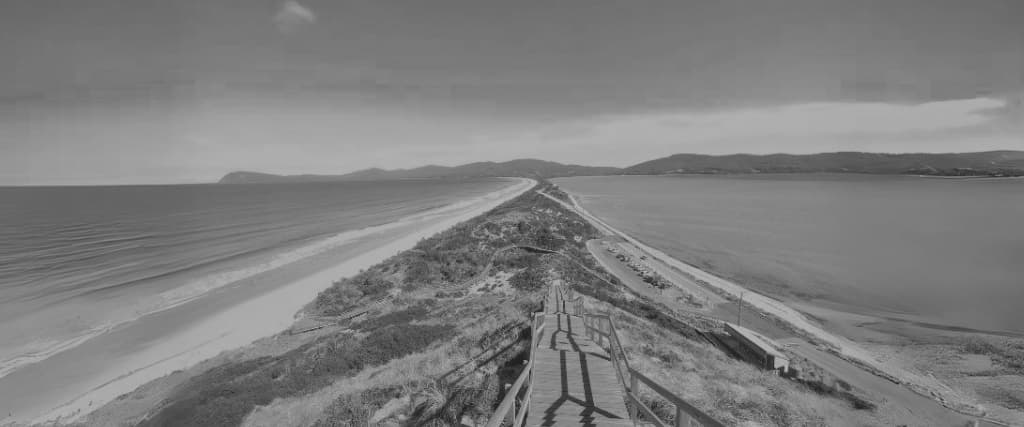
Asking “When is the best time to visit Tasmania?” every five minutes doesn’t get you far. Because changes in the weather may occur that frequently, it’s almost unbelievable how different it is from the rest of Australia. It combines coastal and alpine climates with a tropical jungle.
Many people choose the months of December through February, Tasmania’s driest and hottest, to be the most fantastic time to visit. Don’t let the higher prices and swarms of tourists deter you from visiting Tasmania in the summer; the weather is ideal for outdoor activities like hiking and scuba diving.
Tasmania’s fall months of March and April are lovely times to visit. This is the best time of year for yachts, wines, and fresh Pacific oysters since it is typically the driest, and the days are still warm and long, but the evenings are starting to chill down, and everything is much calmer.
The odds of encountering a wild Tasmanian devil at this time of year are lower than at other times since this is when they mate.
The Best Time to Visit New South Wales
The subtropical climate of New South Wales provides warm summers and mild winters, enough sunlight all year long, and sufficient precipitation to maintain the state’s landscape lush and productive.
New South Wales has a diverse range of climates due to its size. Sydney and the Central Coast have a mild climate, contrasting the dry and semiarid hinterland regions. The northeastern region of New South Wales has a humid subtropical climate, whereas the alpine zones are found in the upper parts of the Great Dividing Range.
September through November and March through May are prime times to visit.
Attractions and other pursuits:
- Scenic World Blue Mountains
- Jenolan Caves
- Mayfield Garden
- Wollomombi Falls.
Let’s look at when you should go and what you should see in Sydney, the capital of New South Wales and one of the greatest cities to live in Australia.
October, November, the end of February, and March are prime times for a Sydney vacation.
Things to do and see in Sydney:
- Sydney Opera House
- Bondi Beach
- Sydney Harbor Bridge
- Royal Botanic Garden.
The seaside is often the hottest part of the country, whereas the mountains inland might have snow and frost in the dead of winter. However, as you go west, you enter drier climates and eventually the desert. Hence, plan for every possibility.
Spring
September – November
As the weather warms up, New South Wales blossoms with lush vegetation. The weather is perfect for trips to the Blue Mountains, the seaside, and the Hunter Valley, with sunny days and comfortable temperatures. Springtime in Sydney is equally beautiful, with flowers blossoming, birds chirping, and a canopy of purple jacaranda trees enveloping the city.
Sydney
It’s no wonder Sydney, with its beach-friendly summers, breezy autumns, crisp winters, and colourful springs, is frequently recognised as one of the world’s most liveable cities. Sydney’s climate is ideal year-round, whether you’re looking for warm summer days at the beach or mild winter mornings for a jam-packed tourist itinerary.
If you want to avoid the sweltering heat of the summer and the bone-chilling cold of the winter, the ideal season to visit Sydney is spring.
September and October
The onset of Spring in September in Sydney brings the cold to mild days, low humidity, and a consistently high number of sunny days that characterise this season.
The 2000 Summer Olympics in Sydney were hosted in September because, statistically, that month had the least amount of rainfall in Sydney. This trend holds for much of the month of October as well.
The average high during this transitional time is a pleasant 21.0°C (69.8°F), while the average low is a cold but tolerable 12.3°C (54.1°F). Therefore, shorts and T-shirts are appropriate throughout the day, and only light garments are required in the evenings.
The Australian summer break officially begins at the end of September. Prices for hotels, airlines, and attractions may go up between the end of September and the beginning of October, but if you want to take the kids on vacation, that’s when you should go.
The Best Time to Visit Victoria (Melbourne)
The climate of Victoria is remarkably diverse, going from semi-arid in the north to moderate around the coast, providing hot to warm summers and chilly winters, with a decent quantity of rain to keep the country appearing green and lush.
Melbourne
It’s not uncommon to have various climatic conditions in Melbourne. The farther north you go, the warmer and drier it is. Nights in the summer are friendly, but the winters are mild and wet.
Melbourne’s climate ranges from hot in the summer (December–February) to cool in the fall (March–May) to cold in the winter (June–August) to mild in the spring (September–November). January and February are often the warmest months in Melbourne.
Extreme heat is standard throughout those months, although the afternoon breezes off Port Phillip Bay provide welcome relief. October is the wettest month and the coolest (June and July).
The ideal time to visit Melbourne is: Autumn (March–May), and spring (September–November) is often considered the best. These periods have the most favourable weather and the fewest tourists. There is often low humidity, so you won’t be sweaty during your day.
Temperatures average
- Summer lasts from December through February, with temperatures ranging from 25°C to 16°C (77°F to 61°F).
- Winter lasts from June through August, with temperatures ranging from 6.5°C to 14.2°C (43.7°F to 57.6°F).
- The wettest months are May through October.
- March through May are the months when autumn occurs.
- The spring season lasts from September through November and is typically pleasant, with temperatures between 11°C to 20°C. (52°F to 68°F)
The Best Time to Visit South Australia
South Australia is the driest state or territory in Australia. There is almost entirely desert in the upper two-thirds of the state. Weather around the shore may be milder than inland, although the southern two-thirds of the state is hot and dry.
Adelaide
When is Adelaide’s optimum tourist season? Adelaide is at its most beautiful in February and March.
Why would you go to Adelaide in the dead of winter? While February is often one of Australia’s warmest months, the end of the month and the beginning of March provide welcome relief with more seasonably pleasant temperatures. Adelaide’s advantageous location plays a role in this.
The average temperature is still pleasant, even if Adelaide might see some pleasantly warm days in the first week of February. The average low is approximately 14 degrees Celsius (57 degrees Fahrenheit), and the average high is around 24 degrees Celsius (75 degrees Fahrenheit), with none of the humidity that plagues northern towns.
Season of Summer (January – February) Summertime sees very little precipitation and temperatures between 16.7 and 28.6 degrees Celsius (62 and 83.5 degrees Fahrenheit). Sometimes it may reach 40 degrees Celsius (104 degrees Fahrenheit). When compared to other Australian cities, Adelaide has the lowest humidity.
Fall (March-May) The fall season is characterised by mild temperatures (12.7 to 22.7 degrees Celsius; 55 to 73 degrees Fahrenheit) and little precipitation. The sun sets against a crimson, orange, and gold sky, colouring the city and the countryside.
Summer (September-May) Frosts are widespread in the neighbouring Adelaide Hills throughout the winter when average temperatures drop between 8 and 16°C (46.5 and 60.8°F). While June has the most rainfall, with an average of 80 mm (3.1′′), Adelaide has the lowest annual rainfall of any Australian city.
Early to mid-winter (March to May) The average temperature rises throughout the spring from 11.8 to 22 degrees Celsius (53.2 to 71.6 degrees Fahrenheit). Low rainfall but rapid temperature drops make for chilly nights.
High Season for Tourists
The busiest time of year for tourists is from April through September. During the peak tourist season in Australia, you may or may not have a pleasant time depending on the activities you have planned.
Most of the nation is experiencing pleasant and dry weather, with warm days, and everything is open and operating normally. However, you must plan and make early reservations to prevent disappointment because of the increased likelihood of congestion and mayhem at popular destinations during the peak season.
Low Season for Tourists
The months of October through March are considered the shoulder season for tourism. There are fewer tourists in Australia during the shoulder seasons, yet it may be a more unpleasant time of year to go there. It is impossible to travel comfortably over a significant portion of the nation, including the Red Center and a substantial portion of Western Australia.
Along with the closure of many hotels and attractions during this period, flooding remains a significant concern throughout a large portion of the country. However, if you travel during this period, you may save money at many different hotels.
Jellyfish Season
If you are planning a beach vacation in Australia and want to go swimming, you should avoid travelling there during the jellyfish season, when the waters are the most hazardous.
Jellyfish season typically runs from October to April in northern Australia and from November to March in the regions of the north of Western Australia and Queensland.
During this time, which occurs at different times throughout the country, box jellyfish swarm the oceans, and their excruciating sting is typically very painful and, in some cases, deadly. Jellyfish season typically runs from October to April in northern Australia.
Crazy January
Even though much of Australia has pleasant temperatures in January, this is not the best month for travelling there. The majority of Australians, as well as school children, are now on vacation. January marks the height of the mosquito and flies breeding seasons in most of Australia, and the heat may be oppressive.
Australian School Terms & Public Holidays
During the Australian Public and School Holidays, seat availability on flights, excursions, and accommodations will be restricted, nonexistent, or priced at costly levels owing to the strong demand. You should think twice about travelling during Australia’s public and school holidays if you can help it.
Climate Variations in Australia
Even though it has a diverse variety of climates, Australia is believed to be the driest continent on the planet. More than 80 percent of the country’s landmass receives an annual precipitation of fewer than 600 millimetres. Furthermore, Australia often experiences weather conditions that are considered to be quite severe.
- Australia’s northernmost Queensland regions and the area surrounding Strahan on Tasmania’s west coast are the wettest places in the country.
- The worst floods often occur in Queensland and New South Wales.
- Port Hedland, Coober Pedy, Alice Springs, Broome, and Geraldton are among Australia’s sunniest locations.
- Albury, Ballarat, Geelong, Gosford, and Cairns have excellent humidity levels.
- Most often, Eastern Australia is affected by fires.
- Minmi, Port Welshpool, Newcastle, Sandy Point, and Awaba are the windiest places in Australia.
- The northwest coast between Exmouth and Broome is where cyclones are most frequent.
Port Macquarie, New South Wales, is an excellent option if you’re seeking the most significant climate in Australia but want to avoid the extremes. Warm water for swimming may be found on the town’s beaches, while the city boasts mild winters and balmy summers.
In Australia, the peak season for cruises is also summer.
Bottom Line
Although the breadth of Australia causes it to have a wide variety of climates, most of the country has pleasant weather with plenty of sunshine. This travel guide highlights Australia’s most popular tourist sites and provides information on some of the country’s most magnificent locations that are significant historically, culturally, and artistically.
FAQs
What Is the Hottest Month in Australia?
December, January, and February are often the warmest months in Australia. To escape the heat during these months, consider travelling to the south. June, July, and August are often the coolest, making them ideal for travel to more northern regions.
Is Summer in Australia Hot or Cold?
Australia maintains several records linked to temperature, including the history for the warmest extended region year-round, the record for the areas with the hottest summer climate, and the record for the maximum sunlight duration.
Does It Snow in Summer in Australia?
While their northern neighbours in Queensland continue to suffer through a heatwave, residents of certain mountainous regions in Victoria and New South Wales have been left shivering through the morning as snow has fallen.
Does Sydney Have Snow?
Snowfall in Sydney is an incredibly unusual occurrence. It is about a six-hour trip south of Sydney to Jindabyne, which serves as the entranceway to the Snowy Mountains. There is a possibility of snowfall in the regional areas of New South Wales, such as the Blue Mountains, Orange, and the Upper Hunter.
Does It Rain Snow in Australia?
In some regions of Australia, it does snow, and the snowfall may be very considerable. Even while snowfall does not occur in every portion of Australia, several areas get significant amounts of the white stuff on average.